Hazwaste treatment / Thermal oxidation of exhaust air and waste
Chemical and other production processes release a wide variety of contaminated residues such as:
- exhaust air and off gases
- effluents and waste solvents
- sludge and solid waste
Intelligent combination of proven technologies
Three factors are important for good oxidation:
- suitable temperature
- sufficient dwell time
- and turbulent flow
The CTU systems, due to exceptional turbulence of the combustion gases, attain very high decomposition rates which even suffice to destroy flame retardants reliably.
Optimum energy efficiency can be achieved through:
- Internal, endothermic oxidation, in which exhaust fumes are preheated by exposure to flue gas heat to reduce auxiliary fuel requirements.
- External, exothermic oxidation, in which the energy from residues and combustion products is transferred to a heat transfer medium such as Steam, for external applications.
The type of oxidation is usually selected on the basis of the kind of pollutant so that the operational safety is not compromised through residue deposits or corrosion.
The type and the chemical reactions of the pollutants within the oxidation process often determine the complexity of the process and of the plant design:
- Nitrogenous residues may emit substantial quantities of nitrous oxide. The formation of nitrous oxide will be minimized by intelligent combustion control and then must be further reduced to permissible levels by SNCR or SCR technology in the flue gas treatment system.
- Residues containing halogenated compounds are difficult to disintegrate and result in corrosive components which are difficult to remove. They demand an appropriate flue gas cleaning process to ensure the emission to be below lawful limit.
- Inorganic materials, such as heavy metals, may result in the contamination of the ashes; further flue gas treatment must assure very low emission concentrations by appropriate process stages.
CTU has comprehensive know-how related to flue gas cleaning systems. Oxidation, heat recovery and flue gas cleaning are optimally sequenced and emission limits are maintained very low in order to guarantee best performance.
CTU technologies for oxidation of waste have a high reputation in the industry thanks to the number of successful reference plants in operation. At CTU, technical concepts are tailored as per customer's need. CTU combines high efficiency through minimization of pollutant emission with highest possible material and energy recovery and minimum use of consumables.
More than 25 of our plants for hazardous waste treatment are in operation worldwide.
Technologies in action
CTU technologies for oxidation of waste have a high reputation in the industry thanks to the number of successful reference plants in operation. At CTU, technical concepts are tailored as per customer’s need. CTU combines high efficiency through minimization of pollutant emission with highest possible material and energy recovery and minimum use of consumables.
Thermal processing of all exhaust gases and waste from a herbicide production unit
Combustion of solid and liquid waste takes place in a rotary kiln with a multifuel burner and a secondary combustion chamber with downstream electrostatic precipitator.
For reasons of availability, gaseous wastes are oxidized in a separate combustion chamber. The flue gases from both process lines are quenched and combined together to be cleansed in a two stage flue gas scrubber. SCR technology is then used to DeNOx the gases. After shut down of the Herbicide Production unit, the unit is being used for general hazardous industrial waste management, which proves the flexibility of the combustion process.
Oxidation of highly chlorinated gaseous and liquid waste
Explosive waste gases and liquid wastes are oxidized in a vertical combustion chamber. In an adjoining three-stage flue gas scrubber, hydrochloric acid is recovered and the flue gases are completely purified. In this reference unit, 3.2 t/h of Steam is generated from 360 kg/h of liquid waste.
TDI-residue incineration
The unit typically comprise of a combined furnace (solids, solvents, and waste gases) so that all types of production wastes can be oxidized. Around 10 t of Steam is generated from 1 t of residual waste.
Since the residues have high nitrogen content, special focus is laid on low NOx formation and reduction. An optimal solution is a multi-stage combustion with an adjoining SCR catalyst. In the downstream two-stage flue gas scrubber, HCl is recovered which is then used for the in-plant waste water treatment.




